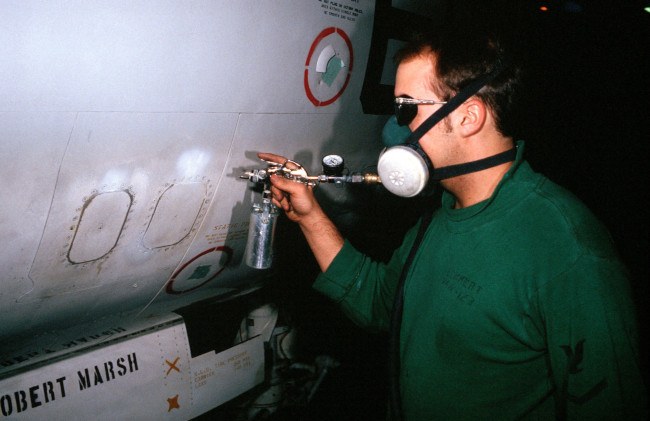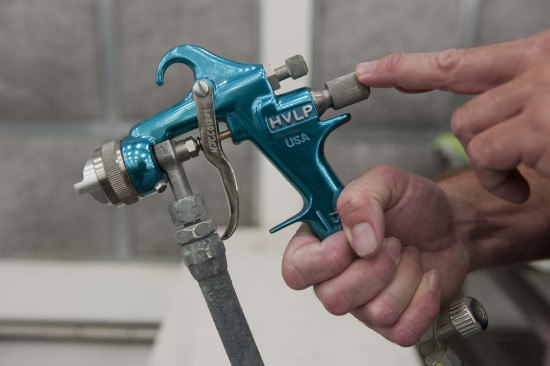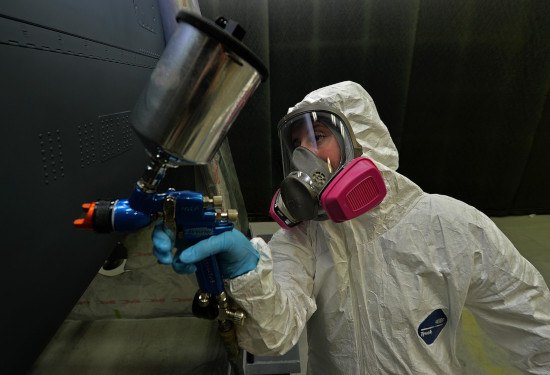How to Paint Spray Like a Pro in 4 Steps
-
- Last updated:


Congratulations on your new paint sprayer! If you have ever painted without a sprayer, then you will quickly see how much quicker and more efficient this method is compared to the traditional brush and roller method.
And, if this is your first venture into the world of painting, you deserve a further congratulations, because you are definitely starting things out the right way.
Using a paint sprayer is actually much easier than many people first assume. However, there are some steps that you need to take before you can use yours the way that the pros do.
Fortunately, we are more than willing to share those steps with you. Read on for a guide to using a paint sprayer like a pro.

Step 1: Mix the Paint
Mixing paint is important regardless of your other tools. That said, it’s especially important to the paint sprayer.
When the paint is not properly mixed, it can lead to lots of clogs and other performance missteps that you don’t want to have to deal with.
Each task is going to require a slightly different approach to mixing paint. Most of the time, whatever product you are using will include instructions on how to perfectly mix the paint and thinner blend.
Thinning paint isn’t hard. Most of the time it’s just a matter of incorporating 1/4th of a cup of water into each gallon of paint that you use.

Step 2: Getting Set Up
If you already know how to set up your paint sprayer, naturally feel free to skip this step. Before you do much of anything, you are going to need to install the tip, prime the pump, and fill the hose. Once you have accomplished these steps, the sprayer will be ready to achieve the results you are hoping for.
Step 3: Select the Right Pressure Setting
The pressure setting that you need to use will depend on the paint and the nature of your task. A good way to tell which setting to use is simply through trial and error. Find some cardboard or paper, and test different settings until you find the paint output that you are looking for.
*Pro Tip*: It’s not enough just to select the right pressure setting. Serious sprayer users also know how to select the right tip. There are lots of different sizes out there, and with some experience, you will become good at picking something that suits the exact job that you have before you.
Generally speaking, smaller diameter tips are good for thin liquids, while wider diameter tips are going to be better for thicker liquids.

Step 4: Paint
The step everyone has been waiting for! Painting with a spray gun is actually pretty easy. Perfecting the art is just going to take practice, but as you accumulate experience you can still enjoy good results.
To paint well right off the bat there are a few things you can try to keep in mind. For one thing, make sure that you keep the sprayer tip at least six to twelve inches away from the surface you are painting.
Bringing the sprayer in any close can result in over spraying, which may cause the paint to get runny.
You are also going to want to maintain a fluid up and down, sidewise motion. Either method will produce smooth, seamless results, but be sure to avoid a circular pattern.
And that is that! Perfecting your form with the paint sprayer may not be instantaneous, but these tips will definitely help!
- Related Read: How To Start a Painting Business in 6 Simple Steps

You might also be interested in: 10 Best Paint Sprayers – Reviews & Top Picks

Conclusion:
Now that you know how to properly use a paint sprayer, it is safe to say that your future painting experiences are going to be much simpler. This fantastic tool saves you lots of time and it produces paint jobs that are not easily replicated.
Now that you know how to use your paint sprayer, go out there and paint!
More how-tos:
- To Rent or Buy a Paint Sprayer? Here’s How To Decide
- How to Prepare a Wall for Painting: 6 Quick Steps
- How to Paint Spray with Wall Stencils
- How to Paint Rubber (Tips & Tricks)
Featured image credit: W. M. Welch, U.S. National Archives
Contents

